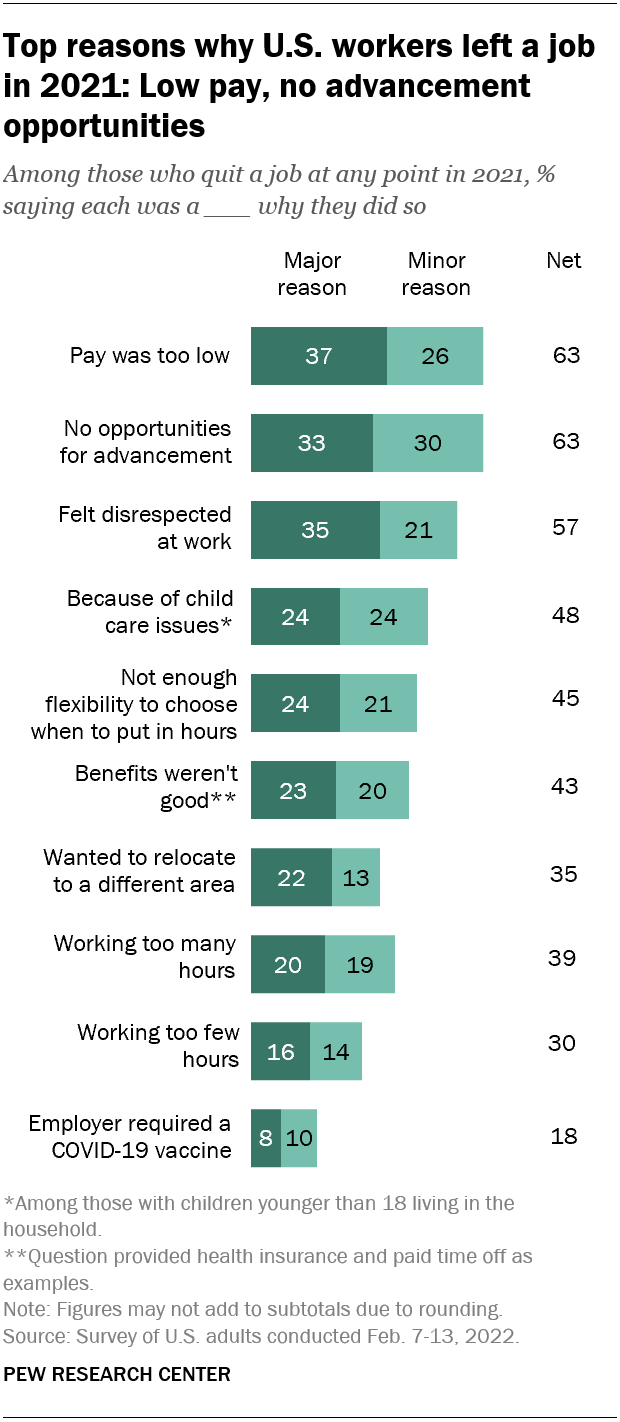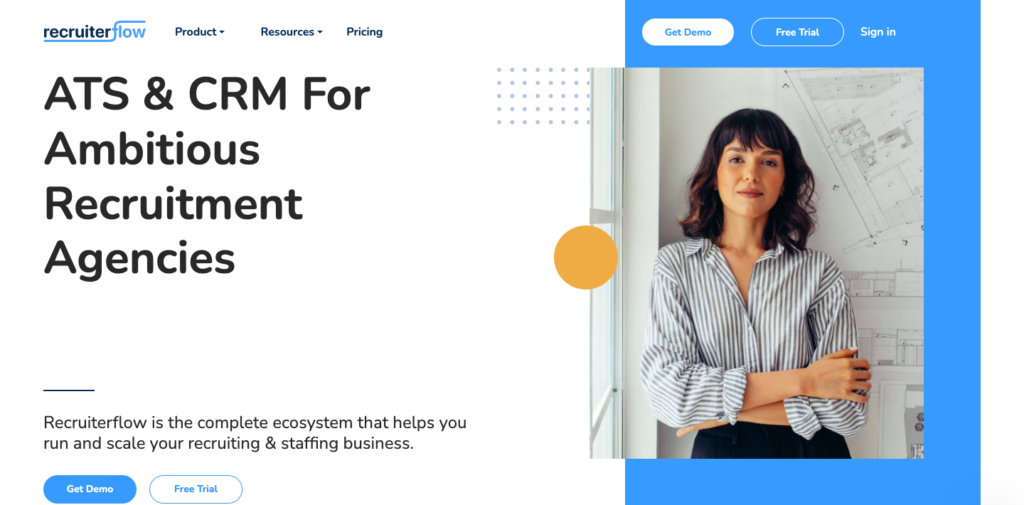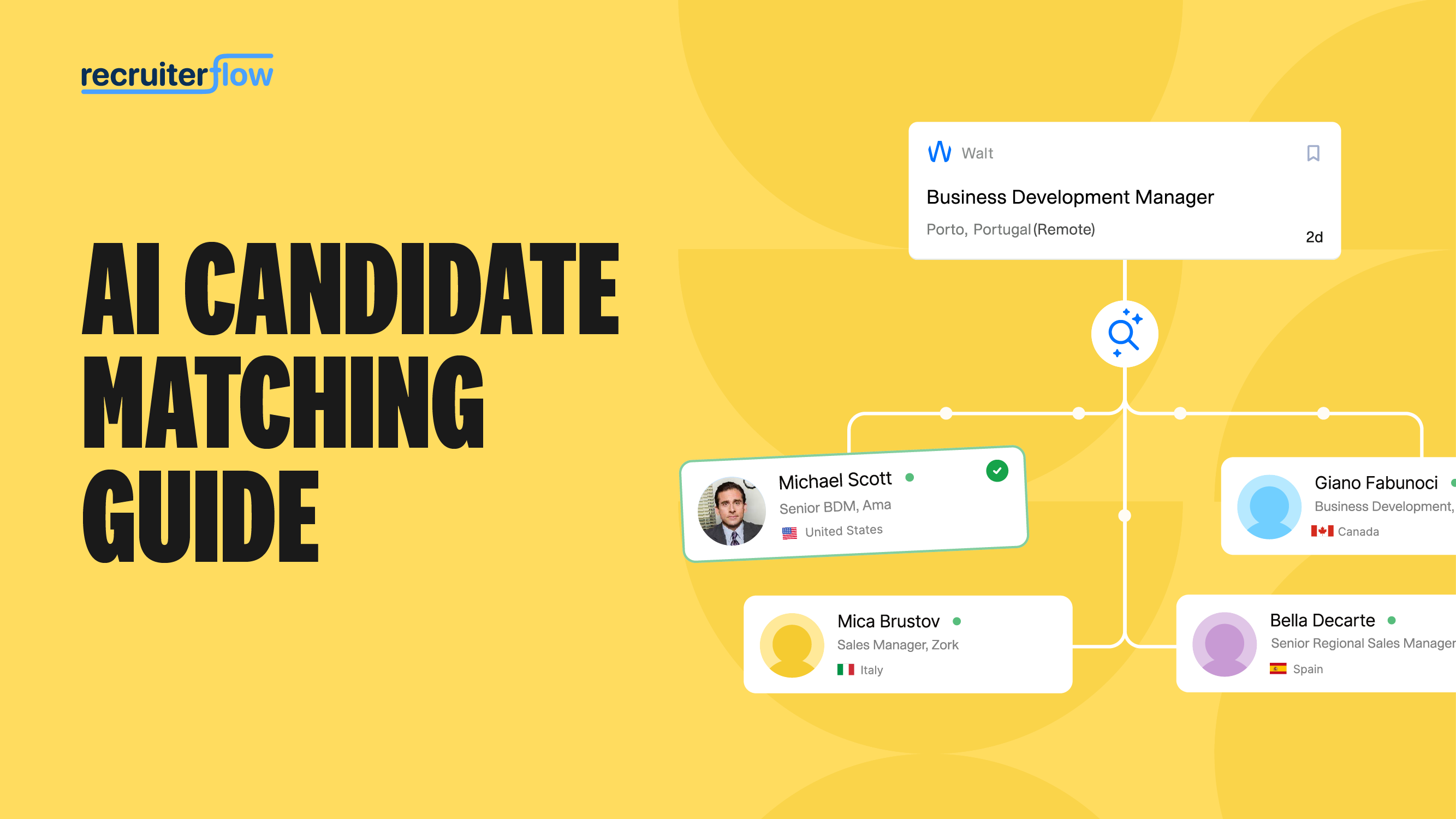
5 Candidate Sourcing Strategies to Find Top Talent in 2025

Candidate sourcing is a tough nut to crack in itself, and the pandemic made it even more challenging.
The rise of remote working culture empowered professionals to look beyond their regular 9-5 and invest time and effort into something of their own. Around 47 million Americans voluntarily quit their jobs for various reasons— start their own business, go freelance full time, or work in a different vertical aligned with their values and mindset. Apart from this, more and more companies have become comfortable with remote work, which has given rise to freelance opportunities. This also enabled employees to opt for full-time freelancing as well.
According to research, the majority of employees quit their jobs in 2021 due to low compensation (63%), no opportunities for growth (63%), and feeling disrespected at work (57%).

With a record number of people leaving their jobs, there’s an open talent war where qualified candidates have multiple job opportunities to choose from. How do recruiters find the best candidates? Is it all about remote working now? Higher salary options?
In this article, we’ll talk about top candidate sourcing strategies to find top talent with a more sophisticated lens that focuses on sourcing qualified candidates and giving them the experience they need to join your organization.
What is candidate sourcing?
Candidate sourcing is the process of actively looking for qualified candidates and creating a recruitment pipeline, while recruitment is more about the process of evaluation, negotiation, and onboarding. It’s a continuous and proactive process of looking for candidates for current and planned job openings.
5 candidate sourcing strategies to find top talent
1. Sync with your hiring manager during the candidate sourcing process
Sourcing the right candidates for the job requires the recruiter to have a clear idea of the expected candidate for the open position. A kick-off meeting with the hiring manager will help set these expectations and give you a clear picture of the must-haves and preferred qualities in the candidate for the available position.
One good way to focus the candidate sourcing process is by imagining what a high-performance working culture looks like in your industry. Does the candidate in question have to maintain a certain level of work output? Do they need a specific skill set to stay productive? If you use these questions as a barometer during the recruitment process, you’ll have an easier time narrowing down your options.
Building a good relationship with the hiring manager also impacts your performance as a recruiter. In fact, developing relationships with hiring managers is the #1 driver of talent acquisition performance — 4X more influential than any other.
Keep reviewing your talent pool during the sourcing process, so you have a window to make changes if required. And while reviewing the overall talent pool, you can determine exactly what requirements are needed to select the top candidates. This list will be a reference point for the recruitment team and can help them filter out and source the best candidates.
Ask the hiring manager if they want you to focus on a particular platform for strategic talent sourcing. Getting clarity, in the beginning, is never enough; you need to keep in touch with the hiring manager to be on the same page throughout the process. This will help match expectations and give you the time to tweak your sourcing strategies during the process itself.
2. Source candidates from your ATS
Thanks to modern applicant tracking systems, recruiters can now automate various parts of their recruitment process including candidate sourcing. It is, in fact, one of the most efficient and cost-effective candidate-sourcing strategies for fast-paced recruiters.
Data reveals that there’s a 35% higher cost attached to recruitment processes if they are not automated. And an ATS plays a big role in automating different stages of the recruiting pipeline; it can help you create a talent pipeline for your existing and future job openings quickly.
With an ATS, recruiting agencies to move faster, avoid work duplication and hire top talent seamlessly—while delivering a great candidate experience. Think of it as a single source of truth that consists of all the information and helps recruiters discover and hire the top talent.
Here’s a list of some features you should look out for in an ATS:
- Customized recruiting pipelines
- One-click sourcing
- Integrations with job boards and social media platforms
- Email and calendar sync
- Automated resume parsing
- Passive candidate management
- Dashboard for recruitment analytics
- Real-time alerts and notifications
The benefits of an ATS go beyond the direct recruitment needs of a staffing agency – it’s important for improving the productivity and quality of hires. In a remote, asynchronous environment, an ATS helps unites recruiting teams and accelerates recruitment processes.
Also, read our blog on the candidate experience survey.
At Recruiterflow, we’re obsessed with speed and accuracy—recruiters can automate different stages of their candidate sourcing process. Using our Chrome extension, recruiters can pull all the relevant information about a candidate directly into their dashboard, parse resumes, and schedule interviews.
3. Build and maintain a talent pool
A talent pool is a database of candidate profiles – applicants from previous job openings, directly sourced candidates, referrals, people with specific expertise, or any candidates you might have found from other sourcing channels.
It is claimed that social media networks are the #1 source of quality hires, followed by internet job boards and employee recommendation sites when it comes to building strong talent pools.
Instead of starting from scratch, you can use a talent pool – it’s a great starting point to kick start your sourcing efforts from an already well-structured database. Besides, if you’re using an ATS like Recruiterflow, you can quickly filter candidates that match your existing job opening’s requirements using an advanced boolean search.
While talent pools require a fair amount of upfront work, they are one of the most valuable assets that your recruitment business can have. Overall, it reduces the time to fill (an important recruitment metric) and allows you to plan ahead in terms of selecting the best candidates.
Also, read our blog on sourcing vs recruitment
4. Measure your recruiting metrics and optimize your candidate sourcing strategy
Traditional metrics like time to fill and time to hire are good to know, but they don’t tell you the whole story of your recruiting processes. To really improve your candidate sourcing strategy, you need to get in the weeds and know exactly what is and what is not working for your team – and how you can optimize your processes.
Also, read our blog on AI Sourcing to enhance your candidate search.
What is the best platform to source candidates? How many qualified candidates were presented with an offer? What’s the breakdown of individual recruiters in our organization?
When you’ll ask these questions, you’ll be able to clearly see your quantitative and qualitative data. This way, you can understand how candidates are experiencing and interacting with your team, where things are going wrong (lower no. of qualified candidates), and where you can optimize your processes.
Here are a few recruiting metrics to use while measuring your sourcing strategies:
- Track sources– You need to be where candidates are! It is good to find top candidates for your clients. It is even better to know ‘from where did you get these candidates’, so you can refer to the same sources in the future.
- Quality of the sourced candidates – It is undeniable that your quantity is a considerable factor while sourcing, but it is equally important to measure the quality of sourced candidates. Keeping a check on the quality will reduce your efforts in the next few steps of recruiting.
- Conversion rate from sourced applicant to getting hired – The goal of sourcing is to ‘hire’ the best candidate for open positions. Hence, this becomes tracking the conversion rate of a candidate from being sourced to getting hired to get an understanding of the kind of candidates being sourced.
Also, check our blog about candidate sourcing tools.
5. Follow up with your rockstar candidates
Rockstar candidates are qualified applicants who were fit for the job but couldn’t accept your offer earlier due to some reason—they weren’t actively looking for a job, they didn’t like the compensation and benefits, or it just didn’t match their expectations. So if you’ve got an open position that matches their requirements, consider following up with them.
- Notify them about new job opportunities that match their skills and experience
- Send them a personalized email to touch base on their recent accomplishments or work updates
- Ask for candidate referrals if you have a job opportunity that matches their network’s expertise
Also Read: Unveiling Candidates’ Top Expectations From Recruiters
Ready to source candidates with Recruiterflow?
Candidate sourcing strategies are different for every recruiter and organization. It might require a few hits and trials before you figure out what brings you the best results. Even after finding the right strategy, there will be a constant need to make changes as per the job dynamics. It’s important to go out and find the kind of candidates your client needs to succeed when the competition is so high.

Modern Recruitment Software for Recruitment and Staffing Agencies





